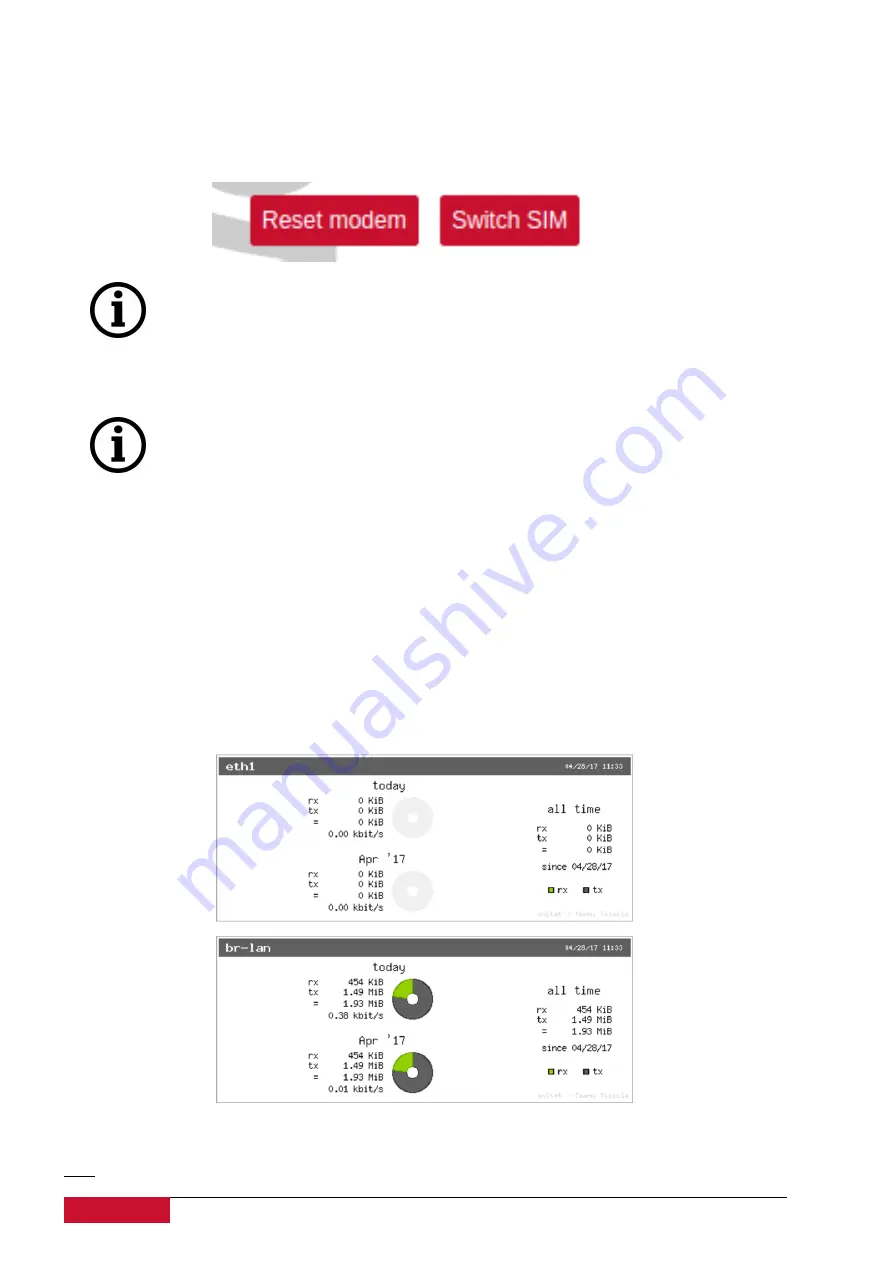
Little bars with percentage at the center left shows signal strength. It is calculated with the respect
to current radio access technology used (RSSI or RSRP). Two buttons at the bottom can reset
(coldreset) modem or manually switch SIM cards (if it is Dual SIM modem and both cards are
enabled).
Signal quality is described in different ways for different type for different mobile
services: Received Signal Strength Indication (RSSI) in GSM (2G) and UMTS
(3G), the Reference Signal Received Quality (RSRQ) in LTE RAT.
The Reference Signal Received Power (RSRP) is a LTE specific measure that
averages the power received on the subcarriers carrying the reference signal.
The RSRP measurement bandwidth is equivalent to a single LTE subcarrier: its
value is therefore much lower than the total received power usually referred to
as RSSI. In LTE the RSSI depends on the currently allocated bandwidth, which
is not predetermined. Therefore the RSSI is not useful to describe the signal
level in the cell.
8.4.9 VNSTAT Traffic monitor
To monitor the traffic of various network interfaces VNSTAT Traffic monitor can be used. Traffic
tracking can be useful if user wants to have a precise information on how much data is used because
it can have a dependance with data transmission costs, for example, mobile (cellular) data.
Graph
An example graph shows the statistics gathered for two network interfaces. In these graphs:
eth1
: Network interface (e.g. Ethernet).
50




































![Lambrecht power[cube] 30.95800.015000 Manual preview](http://thumbs.mh-extra.com/thumbs/lambrecht/power-cube-30-95800-015000/power-cube-30-95800-015000_manual_3388101-01.webp)











